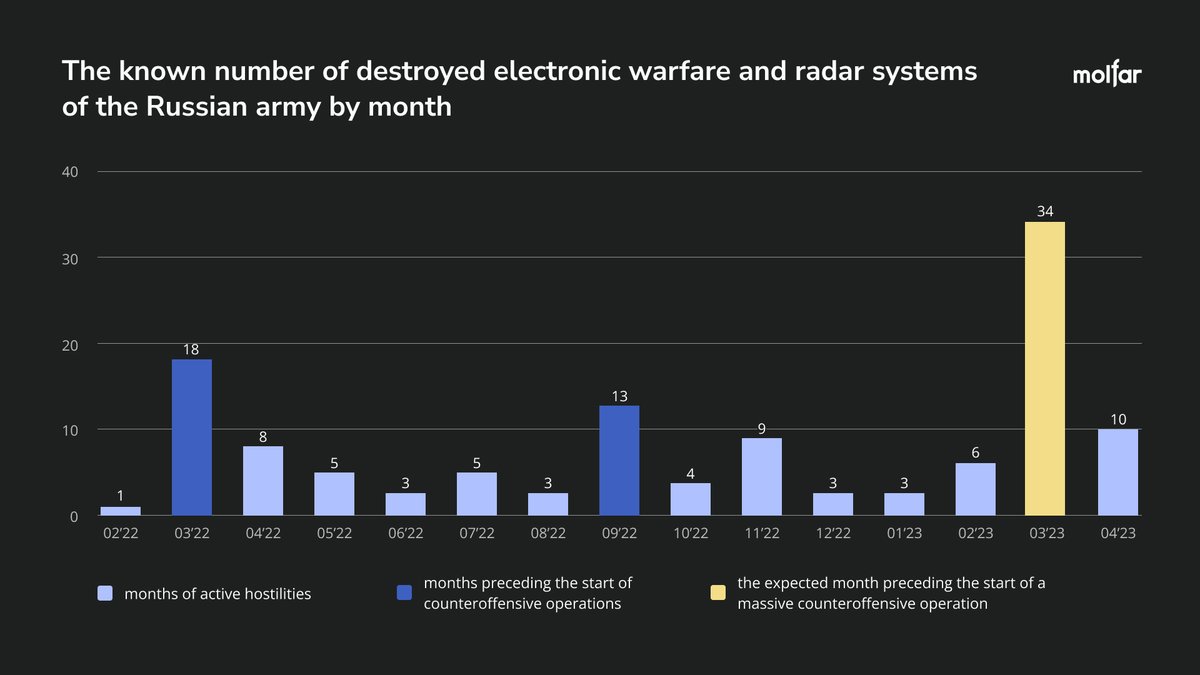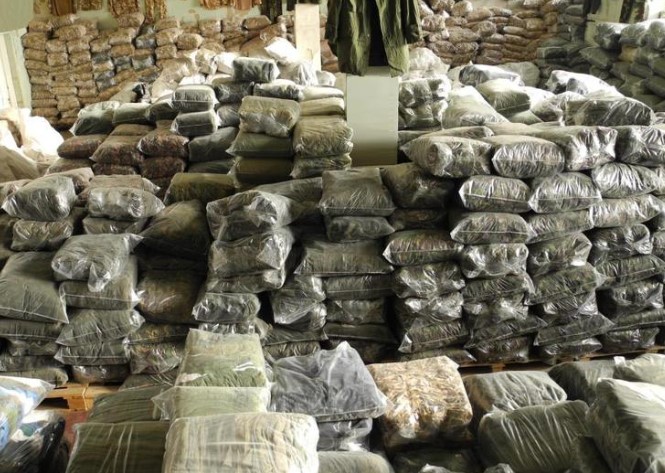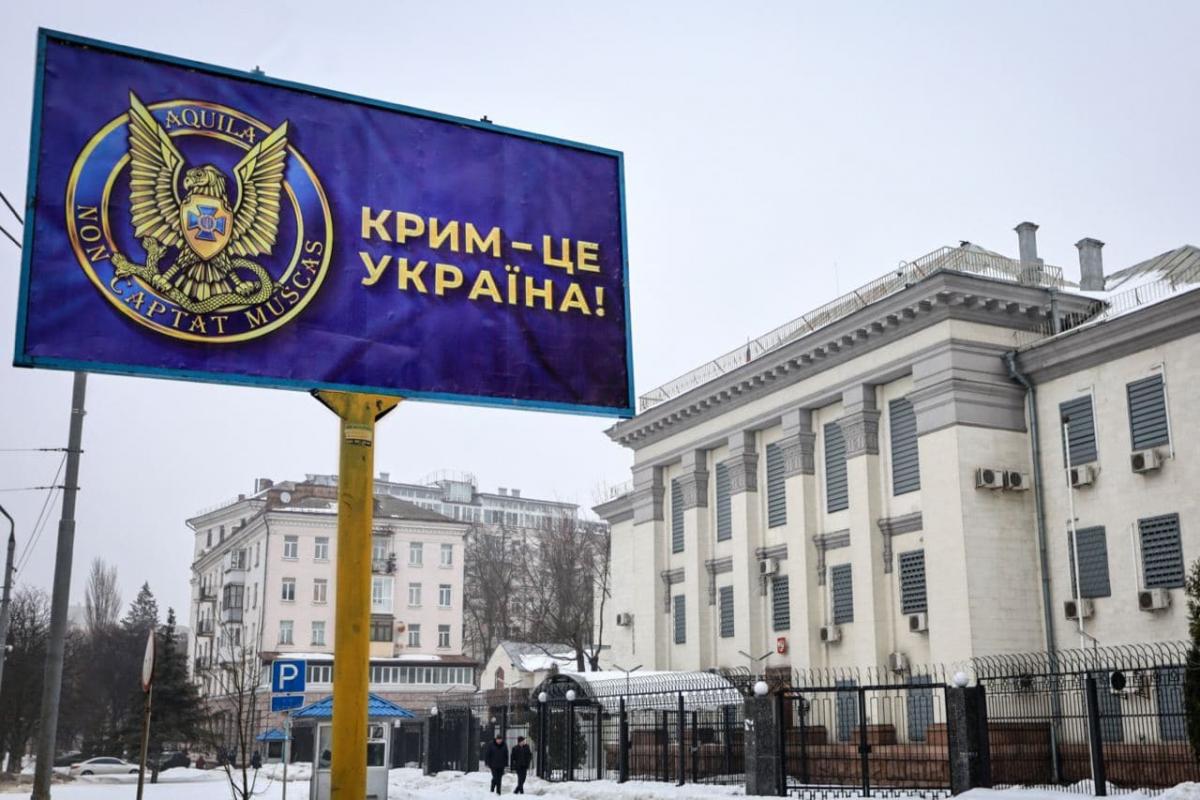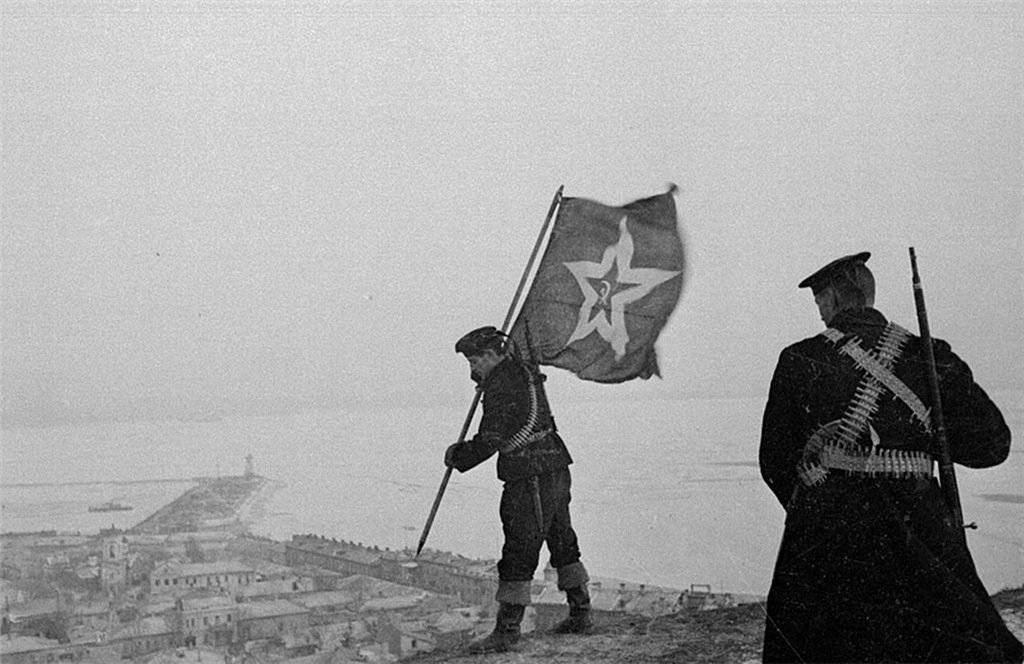1/ Russia has lost over $1 billion worth of electronic warfare equipment in the war in Ukraine, according to the Molfar open source analysis group. The rate of destruction increased greatly in March 2023, possibly indicating an imminent offensive.
2/ Molfar reports that the Russian army has lost Russian army has lost 133 radar reconnaissance (RLS) and electronic warfare (EW) complexes. Ukraine has captured 13.5% of them, worth about $135 million, and is likely now using them against their former owners.
3/ Data published by Molfar shows that there has been a 466% increase in reported destructions of RLS and WE systems in March 2023. The analysts note that major increases have preceded previous Ukrainian offensives, suggesting that Ukraine is systematically targeting the systems. 

4/ Molfar reports that it has identified "37 types of Russian electronic warfare and radar systems in Ukraine, with the most destroyed being the Zoopark, Borysoglebsk, and Zhitel systems." 

Source:
molfar.global/en-blog/electr…
molfar.global/en-blog/electr…
• • •
Missing some Tweet in this thread? You can try to
force a refresh

 Read on Twitter
Read on Twitter







